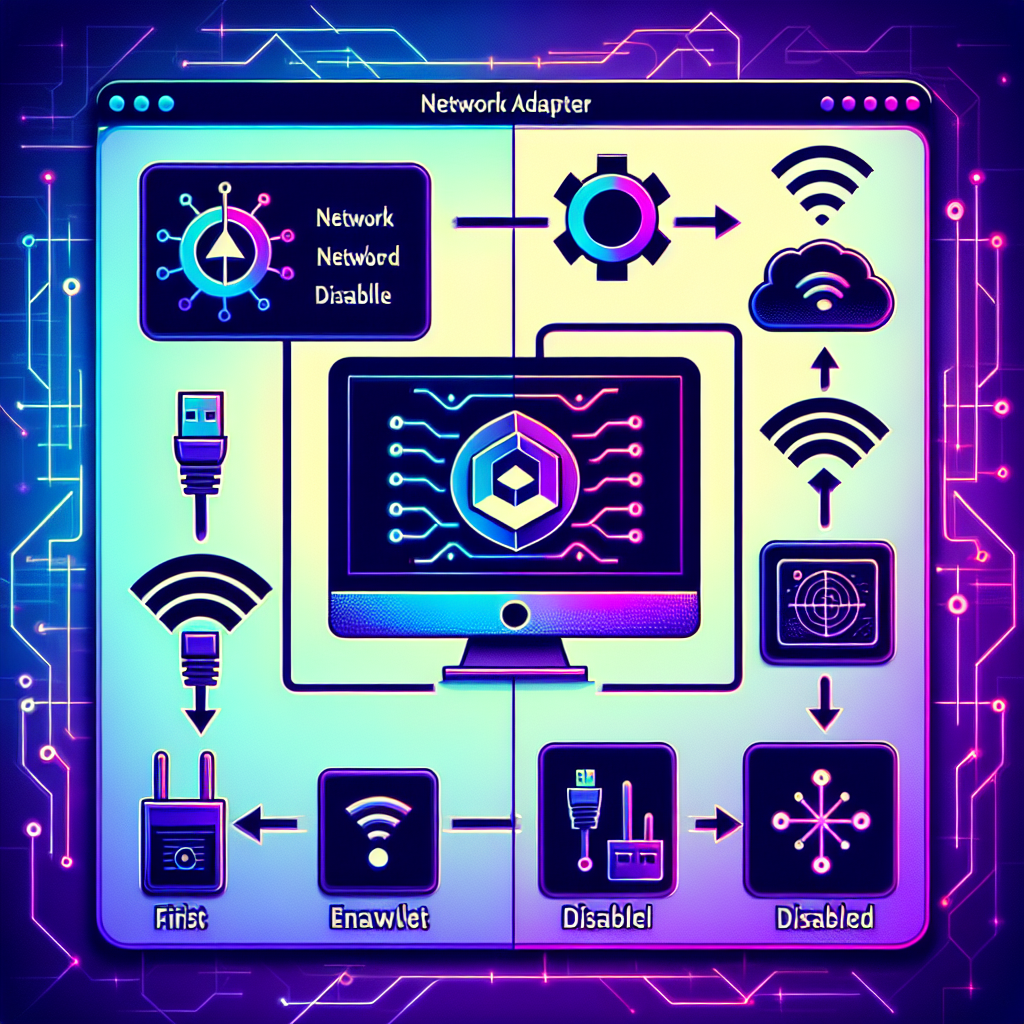
How do you disable and enable a network adapter?
Managing network adapters is an essential skill, whether you are troubleshooting connectivity issues or configuring a secure network environment. This guide will help you understand how to disable and enable network adapters on both Windows and macOS effectively.
Why Disable or Enable a Network Adapter?
There are various scenarios where you may need to disable or enable a network adapter. Below are some common reasons:
- Troubleshooting: Disabling and re-enabling can resolve some network connectivity issues.
- Security: Disabling unused adapters enhances security by limiting potential attack vectors.
- Resource Management: Disabling adapters that are not in use can free up system resources.
- Configuration Changes: Enable or disable adapters as part of network configuration changes or updates.
How to Disable and Enable a Network Adapter in Windows
Disabling a Network Adapter
Follow these steps to disable a network adapter on a Windows machine:
- Open the Control Panel.
- Navigate to Network and Sharing Center.
- Click on Change adapter settings on the left-hand menu.
- Right-click on the network adapter you wish to disable.
- Select Disable from the context menu.
Here’s a summary of the steps in a tabular format:
| Step | Description |
|---|---|
| 1 | Open the Control Panel |
| 2 | Navigate to Network and Sharing Center |
| 3 | Click Change adapter settings |
| 4 | Right-click the network adapter |
| 5 | Select Disable |
Enabling a Network Adapter
To enable a network adapter in Windows, follow these steps:
- Open the Control Panel.
- Go to Network and Sharing Center.
- Click on Change adapter settings.
- Right-click on the disabled network adapter.
- Select Enable from the context menu.
How to Disable and Enable a Network Adapter in macOS
Disabling a Network Adapter
To disable a network adapter on a macOS system, the steps are slightly different:
- Open System Preferences from the Apple menu.
- Click on Network.
- Select the network interface you want to disable from the list on the left.
- Click the Minus (-) button to remove it temporarily.
- Click Apply to save the changes.
Here is a summary in a table:
| Step | Description |
|---|---|
| 1 | Open System Preferences |
| 2 | Click Network |
| 3 | Select network interface |
| 4 | Click the Minus (-) button |
| 5 | Click Apply |
Enabling a Network Adapter
To enable a network adapter on macOS:
- Open System Preferences.
- Click on Network.
- Click the Plus (+) button at the bottom of the list.
- Select the network interface you want to re-enable from the drop-down menu.
- Click Create, then Apply.
Additional Tips for Managing Network Adapters
Here are some additional tips to help you manage network adapters more effectively:
- Keep Drivers Updated: Always ensure your network adapter drivers are up to date for optimal performance.
- Use Device Manager: In Windows, you can also use Device Manager to disable or enable network adapters.
- Check Physical Connections: Sometimes, issues are due to loose cables or poor connections, so always check these first.
- Monitor Network Interface: Use built-in tools like Task Manager (Windows) and Activity Monitor (macOS) to check the status of your network interfaces.
Conclusion
Disabling and enabling a network adapter is a straightforward process that can solve many common networking issues. Whether you’re using Windows or macOS, understanding how to manage your network adapters is a valuable skill. Always remember to keep your drivers updated and check physical connections as part of your troubleshooting steps. With these guidelines, you're now equipped to manage your network adapters effectively.


